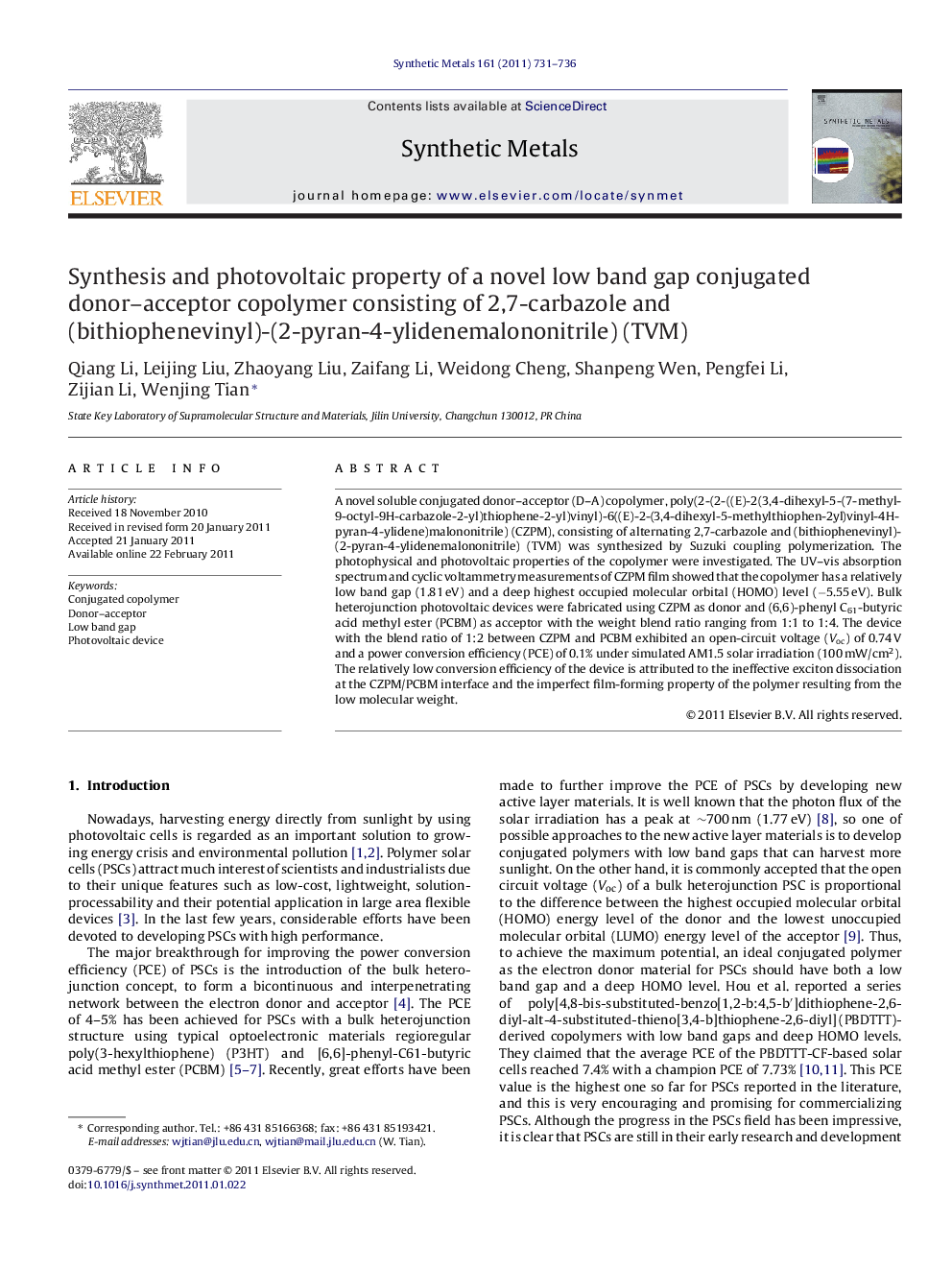| Article ID | Journal | Published Year | Pages | File Type |
|---|---|---|---|---|
| 1442054 | Synthetic Metals | 2011 | 6 Pages |
A novel soluble conjugated donor–acceptor (D–A) copolymer, poly(2-(2-((E)-2(3,4-dihexyl-5-(7-methyl-9-octyl-9H-carbazole-2-yl)thiophene-2-yl)vinyl)-6((E)-2-(3,4-dihexyl-5-methylthiophen-2yl)vinyl-4H-pyran-4-ylidene)malononitrile) (CZPM), consisting of alternating 2,7-carbazole and (bithiophenevinyl)-(2-pyran-4-ylidenemalononitrile) (TVM) was synthesized by Suzuki coupling polymerization. The photophysical and photovoltaic properties of the copolymer were investigated. The UV–vis absorption spectrum and cyclic voltammetry measurements of CZPM film showed that the copolymer has a relatively low band gap (1.81 eV) and a deep highest occupied molecular orbital (HOMO) level (−5.55 eV). Bulk heterojunction photovoltaic devices were fabricated using CZPM as donor and (6,6)-phenyl C61-butyric acid methyl ester (PCBM) as acceptor with the weight blend ratio ranging from 1:1 to 1:4. The device with the blend ratio of 1:2 between CZPM and PCBM exhibited an open-circuit voltage (Voc) of 0.74 V and a power conversion efficiency (PCE) of 0.1% under simulated AM1.5 solar irradiation (100 mW/cm2). The relatively low conversion efficiency of the device is attributed to the ineffective exciton dissociation at the CZPM/PCBM interface and the imperfect film-forming property of the polymer resulting from the low molecular weight.
Research highlights► A novel soluble conjugated donor-acceptor copolymer, CZPM, was synthesized. ► CZPM has a relatively low band gap of 1.81 eV. ► CZPM has a deep highest occupied molecular orbital level of −5.55 eV. ► The solar cell based on CZPM as donor exhibited a Voc of 0.74 V and a PCE of 0.1%. ► The low PCE is due to the ineffective exciton dissociation and the imperfect film.
